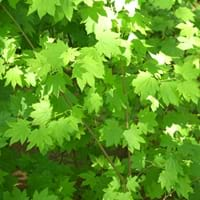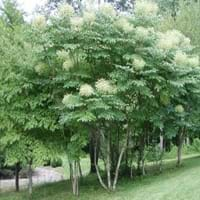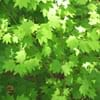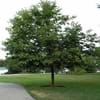Life Span
Perennial
Perennial
Origin
North America, Northwestern United States
Mid-Atlantic United States, Southeastern United States, South-Central United States, Texas
Types
Not Available
Not Available
Habitat
Forests, gardens, Open Forest, Tropical regions, Wet forest
Dappled Shade, Shady Edge, Woodland Garden Secondary
USDA Hardiness Zone
5-9
4-9
Sunset Zone
A3, 2b, 3a, 3b, 4, 5, 6, 14, 15, 16, 17
3a, 3b, 4, 5, 6, 7, 8, 9, 14, 15, 16, 17, 18, 19, 20, 21, 22, 23, 24
Habit
Clump-Forming
Thicket/Colonizing
Flower Color
White, Purple
White, Green, Ivory
Flower Color Modifier
Bicolor
Bicolor
Fruit Color
Red
Purple, Black
Leaf Color in Spring
Green, Light Green
Green, Blue Green, Dark Green
Leaf Color in Summer
Green, Light Green
Green, Blue Green, Dark Green
Leaf Color in Fall
Red, Orange, Dark Red, Orange Red
Yellow, Green, Purple, Blue Green, Dark Green, Yellow green
Leaf Color in Winter
Not Available
Not Available
Leaf Shape
Maple shaped
bipinnate
Plant Season
Spring, Summer, Fall, Winter
Spring, Summer, Fall, Winter
Sunlight
Full Sun, Partial Sun, Partial shade, Full Shade
Full Sun, Partial Sun
Type of Soil
Clay, Loam, Sand
Clay, Loam, Sand
The pH of Soil
Acidic, Neutral, Alkaline
Acidic, Neutral, Alkaline
Soil Drainage
Average
Well drained
Bloom Time
Early Spring
Summer
Tolerances
Wet Site
Pollution, Soil Compaction
Where to Plant?
Ground
Ground
How to Plant?
Stem Planting
Cuttings, Divison, Seedlings
Plant Maintenance
Medium
Medium
Watering Requirements
Allow soil to be completely dry in between waterings, Requires consistently moist soil, Requires watering in the growing season, Water Deeply
Needs high amount of water
In Summer
Lots of watering
Lots of watering
In Spring
Moderate
Moderate
In Winter
Average Water
Average Water
Soil pH
Acidic, Neutral, Alkaline
Acidic, Neutral, Alkaline
Soil Type
Clay, Loam, Sand
Clay, Loam, Sand
Soil Drainage Capacity
Average
Well drained
Sun Exposure
Full Sun, Partial Sun, Partial shade, Full Shade
Full Sun, Partial Sun
Pruning
Pinch or prune as they grow to promote branching and bushiness, Prune every year, Prune for shortening long shoots, Prune if you want to improve plant shape, Remove deadheads
Remove damaged leaves, Remove dead branches, Remove dead leaves
Fertilizers
All-Purpose Liquid Fertilizer
All-Purpose Liquid Fertilizer
Pests and Diseases
Billbugs, Fungal Diseases, Red blotch
Aphids, Leaf spot, Mealybugs
Plant Tolerance
Drought
Drought
Flower Petal Number
Single
Single
Foliage Texture
Medium
Coarse
Foliage Sheen
Matte
Matte
Attracts
Not Available
Bees, Butterflies, Insects, Not Available
Allergy
no allergic reactions
Skin irritation
Aesthetic Uses
Showy Purposes
Borders, Woodland margins
Beauty Benefits
Not Available
Not Available
Environmental Uses
Air purification
Air purification
Medicinal Uses
No Medicinal Use
Alterative, Analgesic, Diaphoretic, Opthalmic
Part of Plant Used
Not Available
Bark, Leaves, Root
Other Uses
Not Available
Used as a potherb
Used As Indoor Plant
No
No
Used As Outdoor Plant
Yes
Yes
Garden Design
Feature Plant, Foundation, Mixed Border, Topiary / Bonsai / Espalier
Feature Plant, Foundation, Mixed Border
Botanical Name
ACER circinatum
ARALIA spinosa
Common Name
Oregon Vine Maple, Vine Maple
American Angelica Tree, Devil's Walking Stick, Hercules' Club
In Hindi
बेल मेपल
Devil's Walking Stick
In German
Wein-Ahorn
Teufelsspazierstock
In French
Maple Vine
Walking bâton du diable
In Spanish
arce vid
Bastón del Diablo
In Greek
αμπέλου Maple
Περπάτημα Stick διαβόλου
In Portuguese
bordo de videira
Vara andando de diabo
In Polish
Vine Maple
Diabelski laska
In Latin
vitis Maple
Virgam diaboli
Phylum
Tracheophyta
Magnoliophyta
Class
Magnoliopsida
Magnoliopsida
Family
Aceraceae
Araliaceae
Clade
Angiosperms, Eudicots, Rosids
Angiosperms, Asterids, Eudicots
Tribe
Not Available
Not Available
Subfamily
Hippocastanoideae
Aralioideae
Number of Species
Not Available
Not Available
Season and Care of Vine Maple and Devil's Walking Stick
Season and care of Vine Maple and Devil's Walking Stick is important to know. While considering everything about Vine Maple and Devil's Walking Stick Care, growing season is an essential factor. Vine Maple season is Spring, Summer, Fall and Winter and Devil's Walking Stick season is Spring, Summer, Fall and Winter. The type of soil for Vine Maple is Clay, Loam, Sand and for Devil's Walking Stick is Clay, Loam, Sand while the PH of soil for Vine Maple is Acidic, Neutral, Alkaline and for Devil's Walking Stick is Acidic, Neutral, Alkaline.
Vine Maple and Devil's Walking Stick Physical Information
Vine Maple and Devil's Walking Stick physical information is very important for comparison. Vine Maple height is 610.00 cm and width 610.00 cm whereas Devil's Walking Stick height is 300.00 cm and width 460.00 cm. The color specification of Vine Maple and Devil's Walking Stick are as follows:
Vine Maple flower color: White and Purple
Vine Maple leaf color: Green and Light Green
Devil's Walking Stick flower color: White, Green and Ivory
- Devil's Walking Stick leaf color: Green, Blue Green and Dark Green
Care of Vine Maple and Devil's Walking Stick
Care of Vine Maple and Devil's Walking Stick include pruning, fertilizers, watering etc. Vine Maple pruning is done Pinch or prune as they grow to promote branching and bushiness, Prune every year, Prune for shortening long shoots, Prune if you want to improve plant shape and Remove deadheads and Devil's Walking Stick pruning is done Remove damaged leaves, Remove dead branches and Remove dead leaves. In summer Vine Maple needs Lots of watering and in winter, it needs Average Water. Whereas, in summer Devil's Walking Stick needs Lots of watering and in winter, it needs Average Water.





